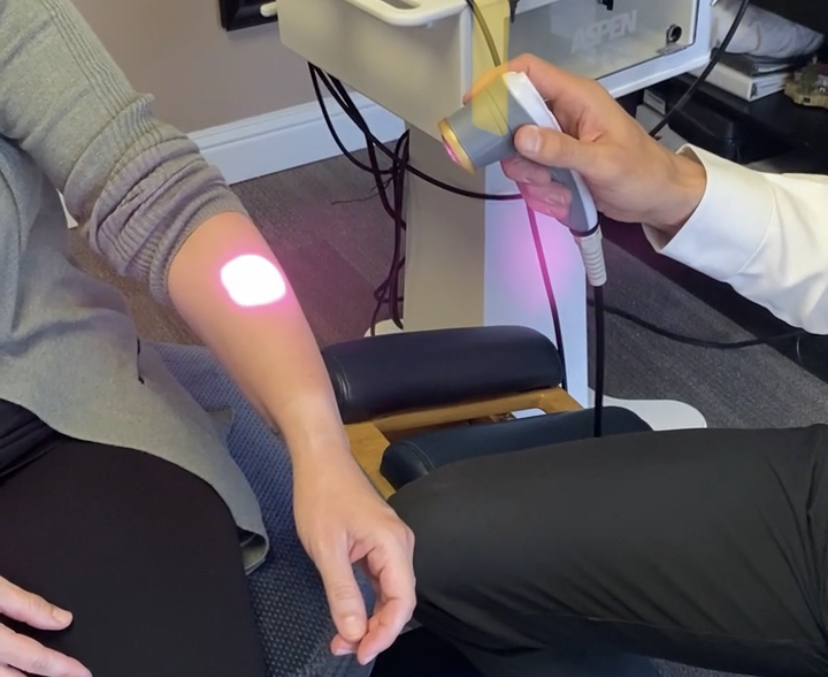How Stabilizing Blood Sugar Plays a Big Role in Weight Loss
It is officially mid-spring in Northern Nevada, which means people are getting out into the sunshine and making plans for the summer season. For many this includes shedding the quarantine layers of sweats and possibly a few extra pounds. As a chiropractic practice that focuses on wellness and overall health, we get asked a lot about weight loss. One of the biggest contributing factors to weight loss is blood sugar. This is often overlooked because people look at calories and fat when trying to trim down, but sugar is one of the biggest barriers to people hitting their goal weight.
What is blood sugar?
Your blood glucose level is the measure of concentration of glucose present in the blood. The body gets glucose from the food we eat, and is the main source of energy in the body. The absorption, storage and production of glucose is regulated constantly by complex processes involving the small intestine, liver and pancreas.
The pancreas produces insulin, releasing it after a person consumes protein or carbohydrates. The insulin sends excess glucose in the liver as glycogen. The pancreas also produces a hormone called glucagon, which does the opposite of insulin, raising blood sugar levels when needed. When the body needs more sugar in the blood, the glucagon signals the liver to turn the glycogen back into glucose and release it into the bloodstream.
When your diet is in balance, these systems work in concert. The problem occurs when the body lacks insulin, has too much, or because the body is not working effectively. Cells may develop a tolerance to insulin, making it necessary for the pancreas to produce and release more insulin to lower your blood sugar levels. Eventually, the body can fail to produce enough insulin to keep up with the sugar coming into the body.
How does high blood sugar prevent weight loss?
Weight loss happens when we expend more energy than we consume (calories). But it also happens when we have balanced blood sugar and no excess insulin. Excess insulin is created as a result of too much sugar in our bodies, and this insulin surge tells our bodies that plenty of energy is available, and that it should stop burning fat and start storing it. By controlling your levels and keeping them in the healthy range (between 80 mg/ml and 120 mg/ml), you will process carbohydrates and proteins for energy rather than having them stored as fat.
How to test your blood sugar levels
You should consult a medical professional if you suspect your levels may be out of balance. They can recommend either a professional or at-home test for you to measure your blood sugar level.
Foods that help stabilize your glucose levels
The simplest way to stabilize your blood sugar levels is to be mindful of what you eat. Sugar hides in a lot of our food, especially if it is processed. When you focus on eating whole foods (things that are primarily grown from the ground), you will have a much healthier blood sugar level. It is also important to eat on a regular schedule and not skip meals so you don’t suffer a blood sugar crash and reach for a processed snack to pick you back up.
Whole Fruits
Specifically consuming blueberries, grapes and apples can help significantly lower your risk of developing Type 2 diabetes, a 2013 study found. With the exception of melons and pineapples, most fruits have low glycemic index (GI) scores and are a good choice when stabilizing glucose levels.
Sweet Potatoes and Yams
Sweet potatoes can help to stabilize or lower blood sugar levels and they are undoubtedly a healthful, nutritious food with a low GI score. People can substitute sweet potatoes or yams for potatoes in a variety of dishes, from fries to casseroles.
Whole Wheat or Pumpernickel Bread
That’s right, bread. While most bread should be avoided when stabilizing blood sugar because of the carbohydrates, whole wheat and pumpernickel have lower GI scores because they go through less processing, leaving them with more fiber that slows digestion and helps to stabilize glucose levels.
Oats
Oats are a superfood. They reduce glucose and insulin response after meals, improve insulin sensitivity, maintain glycemic control, and reduce fats in the blood.
Nuts
Most nuts make a nutritional and low GI snack perfect for helping you feel full, giving you energy and not spiking blood sugar. Nuts also contain high levels of plant proteins, unsaturated fatty acids, and other nutrients like antioxidants and potassium.
Legumes
Beans, chickpeas, peas and lentils are all legumes that include fiber, protein and complex carbohydrates to give you energy, make you feel full longer and even lower the risk of coronary heart disease. Be mindful to eat your legumes whole. For example, make a pot of beans at home vs. opening a can. Those canned and processed beans can contain mounds of hidden sugar that will surely upset your blood sugar levels.
Garlic
Garlic has been a healing ingredient for thousands of years in human history and it is a pungent weapon in the fight against bad levels of blood sugar. You can eat it raw, add it to your favorite recipe, include it in a homemade dressing, the possibilities are endless!
Yogurt
Plain yogurt or Greek yogurt has a low GI score and is a good substitute for less healthy alternatives like sour cream or creme fresh. If you can’t take your yogurt unsweetened, try adding a natural sweetener like honey or a low GI fruit like blueberries.
Understanding your body’s process of storing sugar and listening to your body’s needs will aid in overall health and optimal function. While your overall calorie intake is important when you are looking to lose weight, watching your sugar consumption can get you better results, faster. And you will be creating a healthier body overall.





